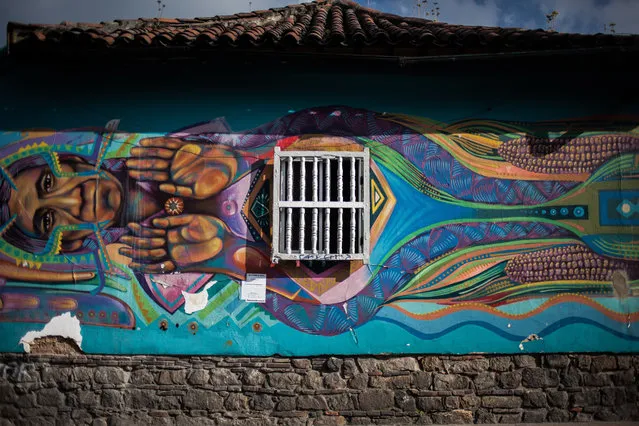
Graffitis are seen at the Candelaria District in Bogota, Colombia on January 4, 2018. Colombia is shedding its negative political reputation with a cultural and artistic renaissance to match any of its South American neighbors. Nowhere is this more evident than in the street art which adorns city's walls, and which reveals the untrammelled creativity of the capital's graffiti artists. In celebration of the country's best street artists, we take a closer look at graffiti in Colombia. Incredibly relaxed laws involving the declassification of graffiti from 'crime' to 'violation' have led to the country's capital becoming a hotbed of global talent with home-grown and world-renowned artists congregating here to show their art. The ability to expand and experiment with their styles with little fear of legal reproach has proved attractive, and as a result the city pulsates with international and native talent. (Photo by Juancho Torres/Anadolu Agency/Getty Images)
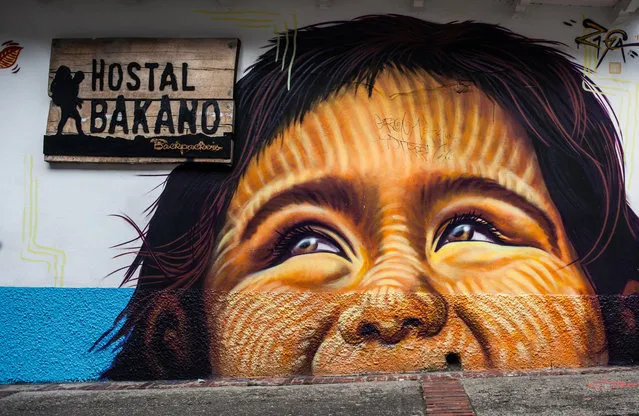
A graffiti displays an impressive mural of an indigenous kid at the Candelaria District in Bogota, Colombia on January 4, 2018. (Photo by Juancho Torres/Anadolu Agency/Getty Images)
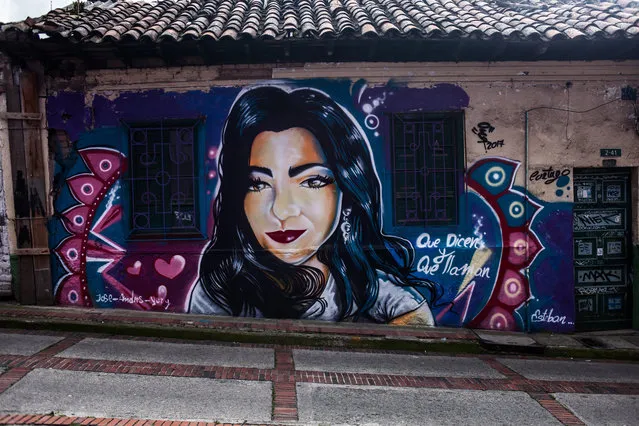
A graffiti, displays a woman, is seen at the Candelaria District in Bogota, Colombia on January 4, 2018. (Photo by Juancho Torres/Anadolu Agency/Getty Images)
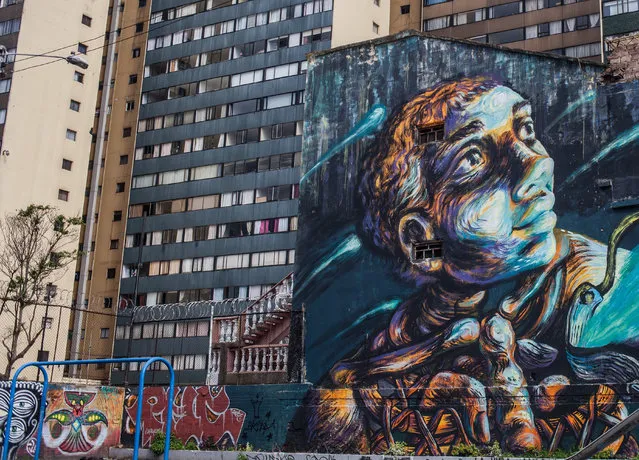
Graffitis are seen at the Candelaria District in Bogota, Colombia on January 4, 2018. (Photo by Juancho Torres/Anadolu Agency/Getty Images)
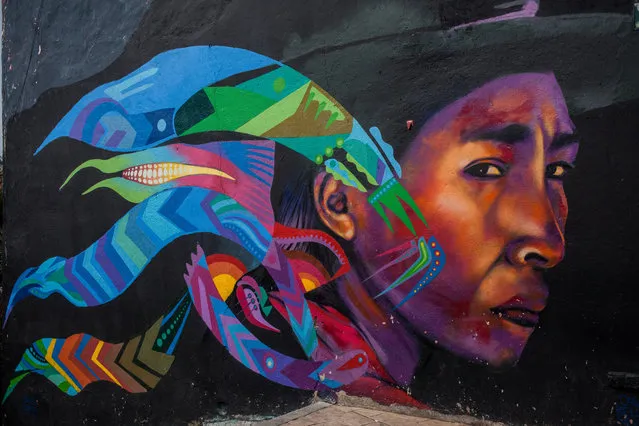
A graffiti is seen at the Candelaria District in Bogota, Colombia on January 4, 2018. (Photo by Juancho Torres/Anadolu Agency/Getty Images)
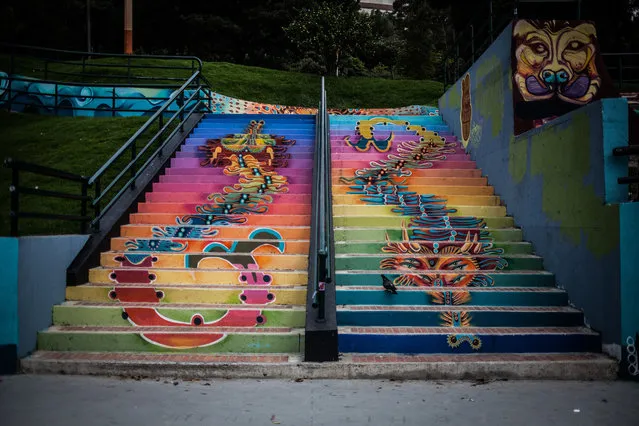
A graffiti is seen on a staircase at the Candelaria District in Bogota, Colombia on January 4, 2018. (Photo by Juancho Torres/Anadolu Agency/Getty Images)
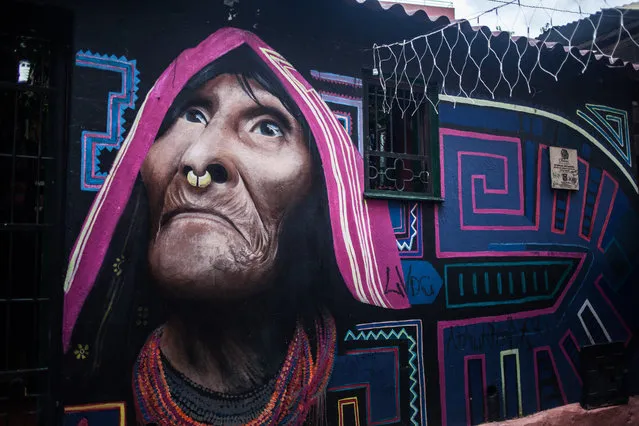
A graffiti displays an impressive mural of an indigenous Kuna Woman at the Candelaria District in Bogota, Colombia on January 4, 2018. (Photo by Juancho Torres/Anadolu Agency/Getty Images)
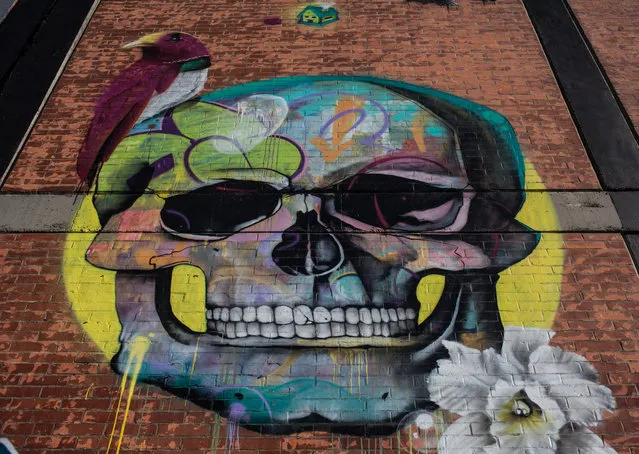
A graffiti is seen at “Graffiti District” in Bogota, Colombia on January 4, 2018. Urban art takes over the walls of the Colombian capital with the “Graffiti District”, which allows artists to capture the walls of their works and seeks to promote the responsible practice of graffiti in the creation of spaces in the city so that the artistic practice can be developed safely, and that allows the circulation of works, so that they blend with the urban landscape. 21 artists, including two Nationals, Eleven locals (From the City) and eight international from countries such as Brazil, Peru, Mexico, France and the United States, who had the opportunity to express their works in large-format spaces. (Photo by Juancho Torres/Anadolu Agency/Getty Images)
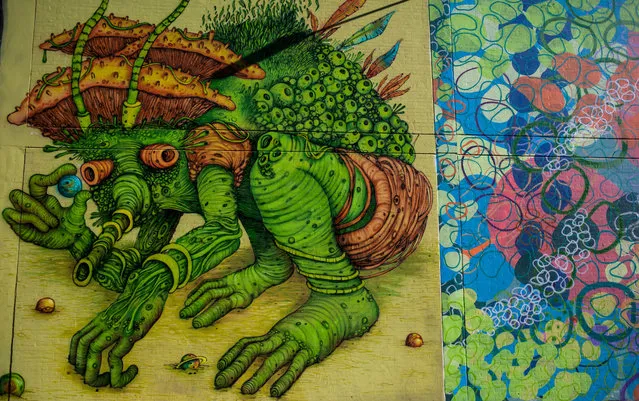
Graffitis are seen at 'Graffiti District' in Bogota, Colombia on January 4, 2018. (Photo by Juancho Torres/Anadolu Agency/Getty Images)
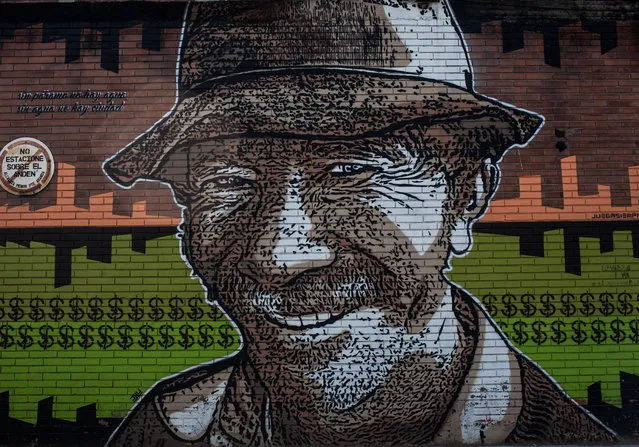
A graffiti displays an old man at “Graffiti District” in Bogota, Colombia on January 4, 2018. (Photo by Juancho Torres/Anadolu Agency/Getty Images)
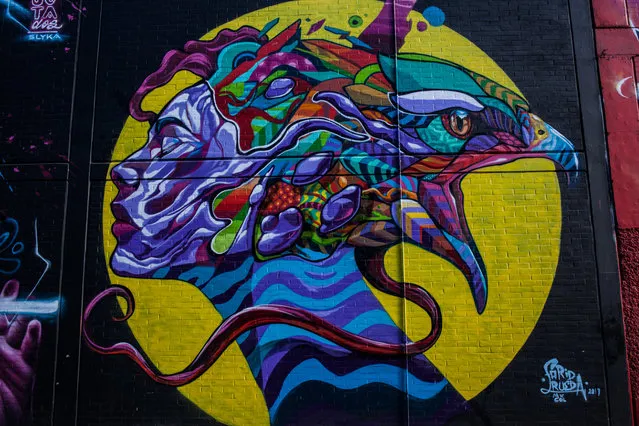
A graffiti is seen at “Graffiti District” in Bogota, Colombia on January 4, 2018. (Photo by Juancho Torres/Anadolu Agency/Getty Images)
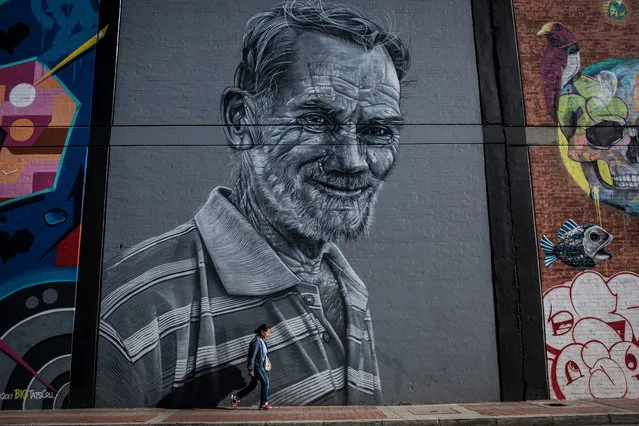
A woman walks in front of a graffiti portraying an old man in a grayscale at “Graffiti District” in Bogota, Colombia on January 4, 2018. (Photo by Juancho Torres/Anadolu Agency/Getty Images)
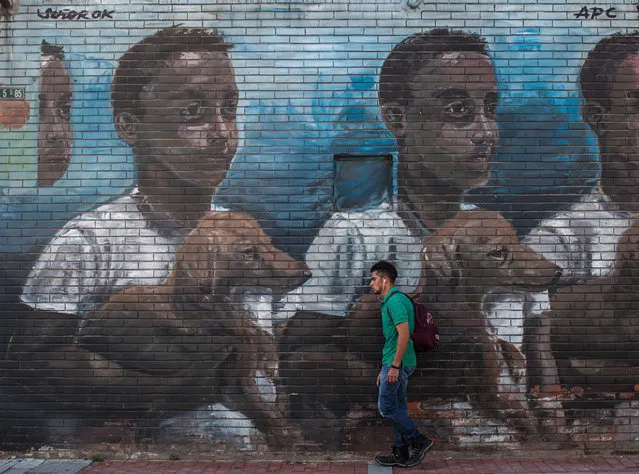
A man walks in front of a graffiti portraying a three kids, at “Graffiti District” in Bogota, Colombia on January 4, 2018. (Photo by Juancho Torres/Anadolu Agency/Getty Images)
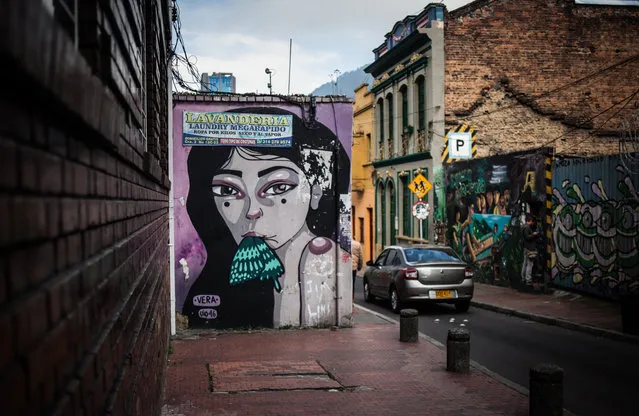
Graffitis are seen at the Candelaria District in Bogota, Colombia on January 4, 2018. (Photo by Juancho Torres/Anadolu Agency/Getty Images)

Schoolgirls stand next to bus stop bomb shelters in the southern city of Sderot, close to the Israeli border with the Gaza Strip, Israel January 8, 2018. (Photo by Amir Cohen/Reuters)
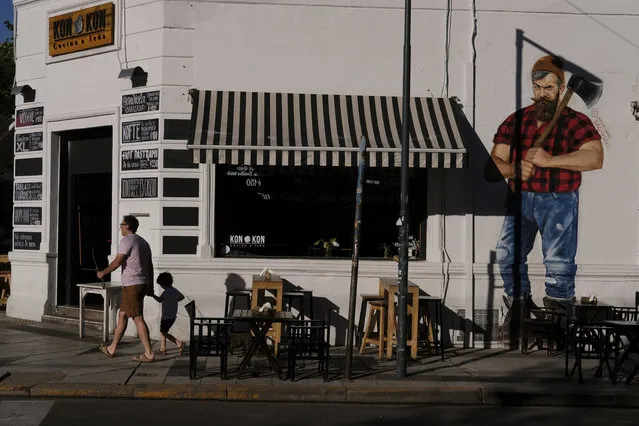
In this November 11, 2017 photo, a mural of a lumberjack decorates Kon Kon restaurant, which serves food cooked over an open flame and wood-burning oven, in Buenos Aires, Argentina. People come here for shawarmas cooked with embers instead of the traditional rotisserie. (Photo by Luis Henao/AP Photo)
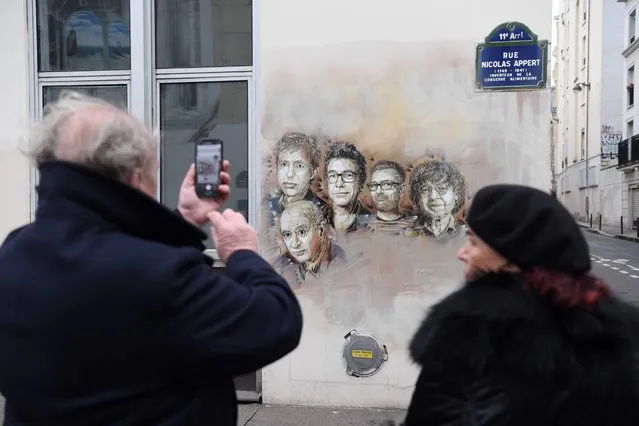
A man takes a picture of portraits (LtoR) of late French satirical weekly Charlie Hebdo's deputy chief editor Bernard Maris, French cartoonists Georges Wolinski, Bernard Verlhac (aka Tignous), Charlie Hebdo editor Stephane Charbonnier (aka Charb) and Jean Cabut (aka Cabu) near the magazine's offices at Rue Nicolas Appert, in Paris on January 7, 2018, on the third anniversary of the jihadist attack on French satirical magazine Charlie Hebdo. Two French jihadists who had sworn allegiance to al-Qaeda killed 11 people at Charlie Hebdo's offices in 2015 over the staunchly atheist magazine's satirical coverage of Islam and the prophet Mohammed. (Photo by Christophe Archambault/AFP Photo)
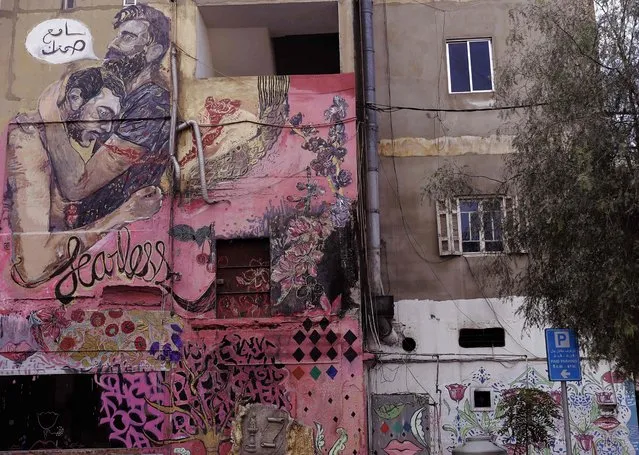
A picture shows a mural on a wall of a building in Ashrafiyeh, on the eastern outskirts of the Lebanese capital Beirut, on January 15, 2018. The writing in Arabic reads: “I hear your silence”. The mural is a collaboration between the Fearless Collective and the Arab Foundation for Freedoms and Equality's Tayf program. The mural is the result of a workshop by the Fearless collective around the theme of masculinities and silence. This workshop was done with Beirut where many young gay and bisexual men took part in a story telling and sharing exercise which developed the mural ideas and its context. (Photo by Joseph Eid/AFP Photo)
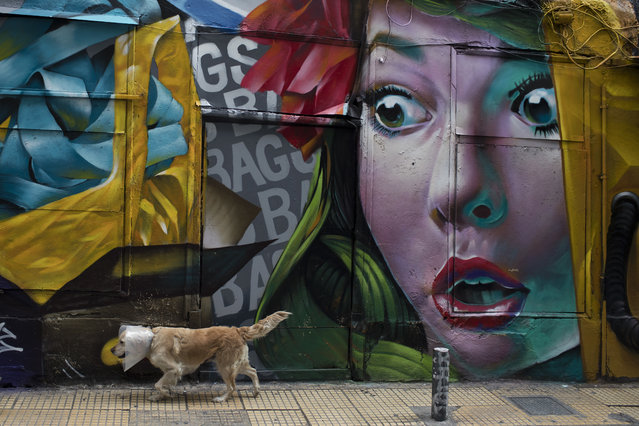
A dog walks past a mural by street artist Alex Martinez outside a shop which sells bags at Psiri area, central Athens, on Thursday, January 25, 2018. (Photo by Petros Giannakouris/AP Photo)
30 Jan 2018 06:49:00,
post received
0 comments
